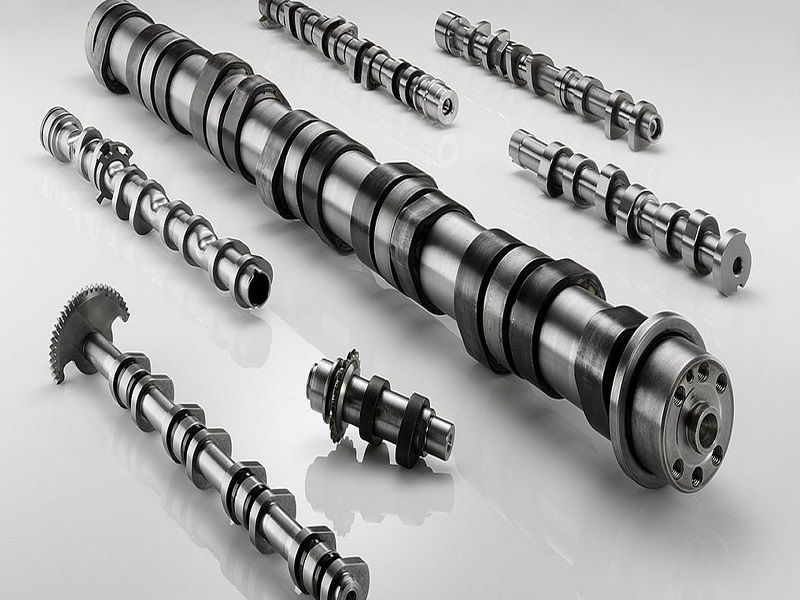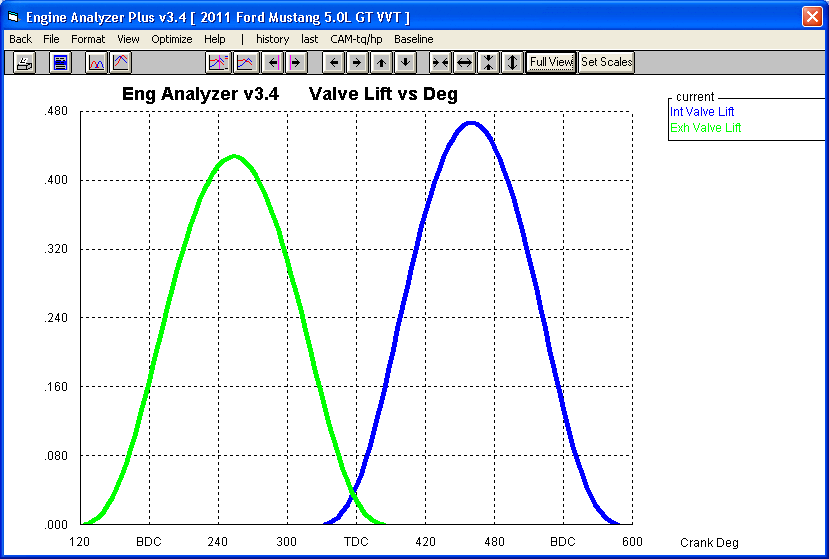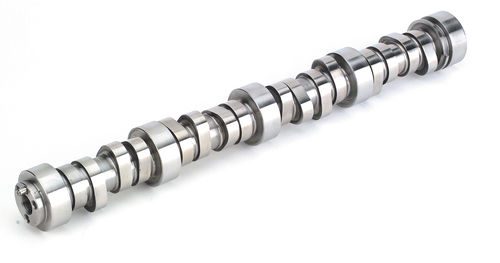When it comes to optimizing engine performance and power, selecting the right engine camshaft can make all the difference. The camshaft plays a crucial role in the operation of an internal combustion engine, controlling the intake and exhaust valve timing and dictating the engine’s power output and efficiency. However, with so many different types of camshafts available, each with its own set of specifications and benefits, choosing the right one for your vehicle can be a daunting task.
In this article, we’ll provide a comprehensive guide to selecting the right engine camshaft for your car, including tips for evaluating your engine’s needs, understanding camshaft specs and measurements, and installing and maintaining your camshaft for optimal performance and longevity. Whether you’re a seasoned mechanic or a first-time car owner, this guide will help you make an informed decision and achieve the best possible performance from your engine.
What is an engine camshaft?
An engine camshaft is a critical component in the operation of an internal combustion engine. It is responsible for controlling the opening and closing of the engine’s intake and exhaust valves, which determines the engine’s performance, power output, and efficiency. Camshafts work in conjunction with other engine components, such as the pistons, connecting rods, and crankshaft, to create the rotational motion that drives the vehicle.
There are different types of camshafts available, each with its own unique benefits and drawbacks. The most common types of camshafts include:
- Hydraulic camshafts: These camshafts are a popular choice for street-driven vehicles, as they provide smooth and consistent valve timing, resulting in good low- to mid-range power. They are also low maintenance and easy to install.
- Solid camshafts: These camshafts are ideal for high-performance racing applications, as they provide increased lift and duration, resulting in greater power and torque at high RPMs. However, they can be noisy and require regular adjustment to maintain proper valve clearance.
- Roller camshafts: These camshafts feature roller lifters, which reduce friction and wear on the camshaft and valvetrain components. They are a good choice for high-performance street and racing applications, as they provide increased lift and duration, while maintaining a smooth and quiet operation.
By understanding the different types of camshafts and their respective benefits and drawbacks, you can choose the right camshaft for your engine and achieve the best possible performance and efficiency.

Factors to Consider When Choosing an Engine Camshaft
When selecting an engine camshaft, there are several key factors to consider to ensure that you choose the right one for your engine and vehicle. Here are some of the most important factors to evaluate:
- Engine type: The type of engine you have, such as a naturally aspirated, supercharged, or turbocharged engine, can affect the type of camshaft you need. For example, a high-performance camshaft with increased lift and duration may be better suited for a naturally aspirated engine, while a turbocharged engine may require a camshaft with a lower duration to prevent boost from escaping.
- Vehicle use: The way you plan to use your vehicle can also affect your camshaft selection. If you use your vehicle for daily driving, you may want to choose a camshaft that provides good low- to mid-range power and drivability, while a camshaft with more aggressive specs may be better suited for racing or high-performance applications.
- Budget: Camshafts come in a range of prices, so it’s important to consider your budget when selecting a camshaft. Keep in mind that higher-priced camshafts may offer better performance and durability, but may not always be necessary for your specific application.
To evaluate these factors and make an informed decision when selecting a camshaft, consider the following tips:
- Research the different types of camshafts available and their respective benefits and drawbacks.
- Consult with a professional mechanic or engine builder who can provide expert advice on camshaft selection.
- Use online resources, such as camshaft selection guides and calculators, to help determine the best camshaft specs for your engine and vehicle.
- Take into account your personal preferences and driving style, as well as any specific performance goals you have for your vehicle.
By taking these factors into consideration and making an informed decision when selecting an engine camshaft, you can achieve the best possible performance and efficiency from your engine.
Understanding Camshaft Specs and Measurements
To select the right engine camshaft for your vehicle, it’s important to understand the various camshaft specifications and measurements that impact its performance. Here are some of the most important specs to consider:
- Lift: Lift refers to the distance that the camshaft opens the engine’s valves. A camshaft with a higher lift will provide increased airflow and power, but can also put greater stress on the valvetrain components.
- Duration: Duration refers to the length of time that the valves remain open during the engine cycle. A camshaft with a longer duration will provide increased power at higher RPMs, but can result in reduced low-end torque and drivability.
- Centerline angle: The centerline angle refers to the angle between the intake and exhaust lobes on the camshaft. A camshaft with a wider centerline angle will provide increased low-end torque and drivability, while a narrower centerline angle will provide increased power at higher RPMs.
- Lobe separation angle: The lobe separation angle refers to the distance between the intake and exhaust lobes on the camshaft. A camshaft with a wider lobe separation angle will provide increased low-end torque and drivability, while a narrower lobe separation angle will provide increased power at higher RPMs.
When selecting a camshaft, it’s important to consider the balance between lift, duration, centerline angle, and lobe separation angle to achieve the desired performance characteristics for your engine and vehicle.

To help illustrate these concepts, here are some examples of camshaft specs and their impact on performance:
- A camshaft with high lift and short duration is ideal for drag racing and high-performance applications, as it provides maximum power at high RPMs.
- A camshaft with moderate lift and duration is suitable for street driving and daily use, as it provides good low- to mid-range power and drivability.
- A camshaft with a wide centerline angle and moderate lift and duration is well-suited for tow vehicles and other heavy-duty applications, as it provides good low-end torque and towing power.
By understanding these camshaft specs and their impact on performance, you can select the right camshaft for your engine and achieve the best possible power and efficiency.
How to Install and Maintain Your Engine Camshaft
Installing a new engine camshaft in your vehicle can provide a significant boost to performance, but it’s important to take the necessary precautions and follow proper procedures to ensure a safe and successful installation. Here are some step-by-step instructions for how to install an engine camshaft:
- Gather necessary tools: You will need a camshaft installation tool, a degree wheel, a dial indicator, a torque wrench, and other basic mechanic’s tools.
- Remove the old camshaft: Remove the valve covers, rocker arms, pushrods, and other components that are in the way of the camshaft. Use a camshaft installation tool to carefully remove the old camshaft.
- Install the new camshaft: Lubricate the new camshaft with assembly lube and carefully install it into the engine block, making sure to align it with the timing chain or belt. Use the degree wheel and dial indicator to set the camshaft to the proper specifications.
- Reassemble the valvetrain: Install the pushrods, rocker arms, and other valvetrain components, making sure to torque them to the manufacturer’s specifications.
- Perform a break-in procedure: After installing the new camshaft, it’s important to perform a proper break-in procedure to ensure that the camshaft and other engine components are properly seated and lubricated. This typically involves running the engine at varying RPMs for a specified amount of time.
In addition to proper installation, it’s important to properly maintain and care for your engine camshaft to ensure long-term performance and reliability. Here are some tips for camshaft maintenance:
- Check valve clearance regularly: It’s important to check and adjust the valve clearance on your engine periodically to ensure that the camshaft and valvetrain components are working properly.
- Use proper lubrication: Use high-quality engine oil and assembly lube to lubricate the camshaft and other valvetrain components.
- Avoid over-revving the engine: Over-revving the engine can cause stress on the camshaft and other components, leading to premature wear and failure.
- Avoid using aggressive cleaners: Harsh chemicals and cleaners can damage the camshaft and other engine components, so it’s important to use only approved cleaning products.
By following these tips for camshaft maintenance and installation, you can ensure that your engine performs at its best and lasts for years to come.
Conclusion
In conclusion, selecting the right engine camshaft is a critical step in optimizing your vehicle’s performance and longevity. By considering factors such as engine type, vehicle use, and budget, and understanding key camshaft specifications such as lift, duration, and centerline angle, you can choose the camshaft that best fits your needs and achieve the best possible power and efficiency from your engine.
Proper installation and maintenance of your engine camshaft is also essential to ensure its long-term performance and reliability. By following the proper installation procedures, performing a break-in procedure, and regularly maintaining and caring for your camshaft, you can help ensure that your engine performs at its best and lasts for years to come.
We hope that this guide has provided valuable insights and guidance for selecting and optimizing your engine camshaft. By implementing the tips and strategies provided in this article, you can take your vehicle’s performance to the next level and enjoy the benefits of a well-tuned engine.
References and Additional Resources
For more information on engine camshaft selection and performance optimization, check out the following resources:


